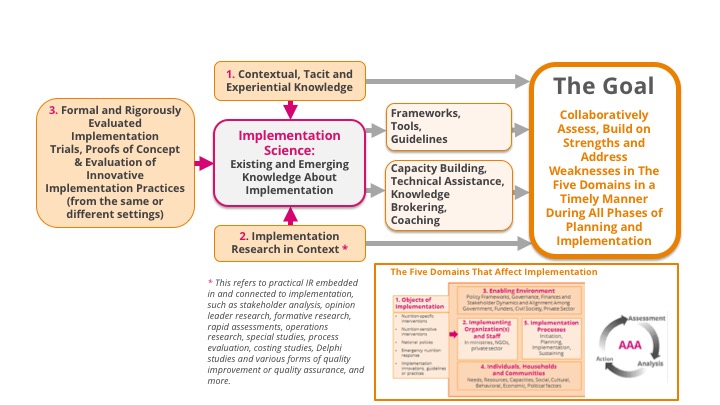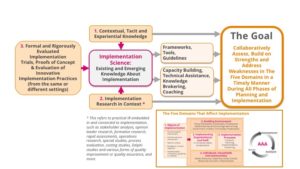SISN President Discusses Society’s Conceptual Thinking and Strategic Plan with Global Multi-Sectoral Nutrition Project
On 8 May 2018, SISN President Dr. David Pelletier joined an informal virtual session hosted by USAID’s flagship multi-sectoral nutrition project, Strengthening Partnerships, Results and Innovations in Nutrition Globally (SPRING) to discuss practical application of implementation science (IS) for nutrition. Attendees viewed Dr. Pelletier’s recent presentation at Emory University on this topic before sharing their comments and questions.
It has been a year since we developed and first disseminated our integrative framework for IS. During this time our conceptual thinking has evolved and in turn our framework has also been refined. The thought-provoking discussion during this recent session brought our attention to some questions that our key stakeholders may have about the Society, our Strategic Plan, and guiding framework. This blog aims to highlight some of these questions and through the audio recording of Dr. Pelletier’s explanatory responses clarify any concerns or misunderstanding.
Q1. Some of the elements within the five domains of the SISN Integrative Framework for IS overlap. For example, both nutrition-sensitive and nutrition-specific interventions may be a part of national agendas and NGO projects. Similarly, there is often no hard and fast lines between the stages of the implementation process and to some extent they go on at the same time. Given this complexity within the framework, how might implementers use it to guide program assessment and design?
A1. One of the strengths of our Framework is its comprehensiveness. We’ve tried to put everything at a general enough level so that it captures all possibilities, but that strength can also be its weakness…
Hear Dr. Pelletier’s complete response here:
Q2. Many times project teams are tasked by donors with creating implementation tools as one of their main deliverables. How can we reconcile their demands without reinventing the wheel? And how can organizations like SPRING benefit from collaborating with SISN?
A2. The tools are a direct way that organizations like SPRING can collaborate with or strengthen the work that SISN is trying to do. One of the things that is missing right now is an inventory of tools and frameworks that exist…
Hear Dr. Pelletier’s complete response here:
Q3. We know that dissemination and training are not effective implementation strategies but it appears that what SISN is currently focused on is disseminating existing knowledge. So there seems to be a contradiction here! Are there institutional commitments that the global nutrition community can make that go beyond training and capacity building to help us to get to where we need to go?
A3. It’s a really great question but it’s a really big question. As I said, business as usual implementation and business as usual research is not going to do it so we need changes on both fronts…
Hear Dr. Pelletier’s complete response here:
Let’s keep this conversation going. If you have any thoughts or comments on this discussion, we’d like to hear from you! Please send any feedback to: info@implementnutrition.com
Acknowledgements and Permission for Use: Thanks to SPRING for inviting us to join their virtual session and for providing permission to share this audio recording on our website.


